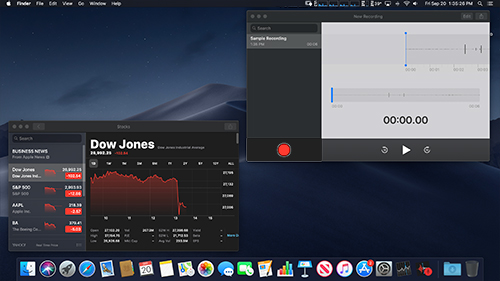

- Newast update for mac sierra how to#
- Newast update for mac sierra install#
- Newast update for mac sierra upgrade#
- Newast update for mac sierra pro#
- Newast update for mac sierra software#
Note, however, that it’s not always possible to upgrade older Macs to the latest version of macOS. If you use macOS High Sierra or earlier, you can update Safari by simply upgrading macOS via the App Store.
Newast update for mac sierra install#
Newast update for mac sierra software#
Go to System Preferences and select Software Update.
Newast update for mac sierra how to#
Here’s how to upgrade Safari on Mac for macOS Mojave or later: Now you know the reasons to download a Safari update, let’s look at how to do it. A case in point is Safari 14 in Big Sur, which came with speed gains of up to 50%, a revamped start page, favicons and instant translation, among other things. You might also want to run the latest version of Safari because it has new features.

The latest version of Safari might then fix those security issues, as well as resolving other bugs. On top of that, Apple security experts regularly discover loopholes that can be exploited by cybercriminals. And there’s a good reason for that: over time, software incompatibilities inevitably arise. Let us know how your experience with macOS High Sierra has been so far in the comments below.No matter how fast and enjoyable Safari is, Apple always tries to streamline it. To do this, head to the Mac App Store and update your apps.Īlso read: The best new features in macOS High Sierra So, it’s a good idea to update your apps to a newer version. If this is your case, there is a good chance that you are running older versions of those apps.
Newast update for mac sierra pro#
To do this, open Activity Monitor on your device and force quit all the apps that are eating up your system’s memory.Ī lot of Mac owners have recently claimed that some of their favorite apps like Final Cut Pro X 10.3.4, Motion 5.3.2 or Logic Pro X 10.3.1 fail to work in macOS High Sierra. If nothing happens, make sure you read on.įind which apps are taking a lot of RAM on your device and kill them. Before trying to do anything, make sure you restart your Mac to see if the problem is dealt with. If you have recently noticed that your Mac is running slowly after updating to macOS High Sierra, we believe that we can help you out. To do this, open Google Chrome on your Mac, click on Settings and hit Advanced. If you are automatically logged out of your Mac in Google Chrome, make sure you disable hardware acceleration. After that, click on Advanced and untick the box next to Log out of…minutes of inactivity. To fix the issue, click on the Apple menu at the top left corner of the screen, select System Preferences from the pull-down menu and select Security & Privacy. If macOS High Sierra keeps logging you out of your Mac, don’t freak out because we are here to help.
If nothing happens, make sure you read on. Now just simply run Disk Utility to see if the problem is fixed. Release those keys and your Mac will reboot normally. Hold down those keys until your Mac reboots and you hear the startup chime. To do this, turn off your computer, then turn it back on and hold down four keys together Option, Command, P, and R for 20 seconds. If you are experiencing the issue, we recommend you restart the NVRAM on your Mac. We have got several complaints from Mac owners that their machine fails to start after updating to macOS High Sierra. If the problem still persists, delete the macOS High Sierra download file, reboot your Mac and try re-downloading the update. Besides, make sure you are still connected to a network (you can switch to an Ethernet cable for a better connection). The best shot now is to pause the download and try again. However, it’s mostly because you are trying to download the update on the release day.

There are several reasons why macOS High Sierra won’t download on your device. macOS High Sierra has failed to downloadĪ lot of Mac owners have reported that they get a message that says “macOS High Sierra dowload has failed” when trying to install Apple’s newest version of macOS.Keep in mind that we recommend you back up your Mac before trying to update your machine. In this article, we have created a list of the five most common macOS High Sierra problems and will show you how to fix them. If you have just updated your Mac to macOS High Sierra and you are dealing with above-mentioned issues, don’t freak out because we are here to help. We have heard some of the issues Mac owners are facing with macOS High Sierra, ranging from issues with apps to Mac running slowly after the update. However, macOS High Sierra still has its own issues that may make your experience less joyful. Apple’s newest macOS version adds small and welcome changes to the operating system, encouraging users to upgrade. MacOS High Sierra is officially available for all Mac owners worldwide.


 0 kommentar(er)
0 kommentar(er)
